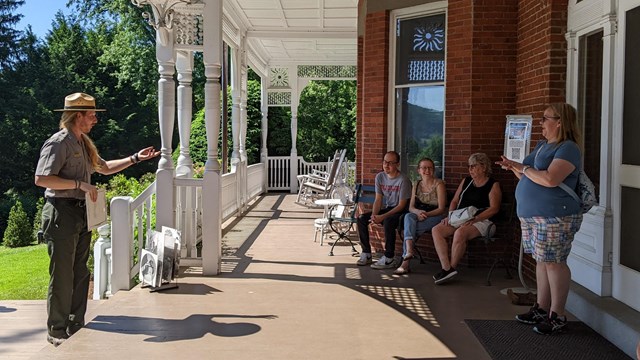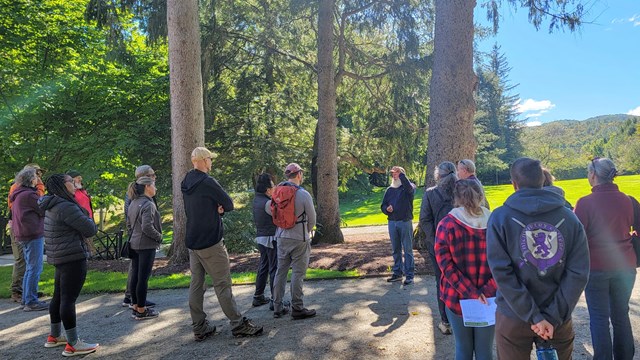Telling the Evolving Story of ConservationEstablished by Congress on August 26, 1992, the park tells the story of conservation history and the evolving nature of land stewardship. A dedicated team of National Park employees, volunteers, and partners works together to fuel this goal. Practicing Sustainable ManagementThe Mount Tom Forest is a key component of the cultural landscape of the 555-acre Marsh-Billings-Rockefeller National Historical Park and plays an important role in the Park’s interpretation and demonstration of stewardship. The Forest Management Plan outlines a sustainable strategy for managing Mount Tom Forest that honors tradition, embraces long-term ecological changes, values its natural and cultural resources, enhances community well-being and sustainability, and fosters civic engagement and stewardship. 
The Mount Tom Forest
The woods that cover Mount Tom stand as both a model of scientific forestry practices and a beloved public resource. Exploring Innovative Approaches to Place-Based Stewardship Education
Education
The park is committed to exploring innovative approaches to place-based stewardship education. Preserving Natural and Cultural Resources
Nature
The National Park Service preserves the natural resources of the park. 
Collections
Marsh-Billings-Rockefeller preserves a diverse collection of fine arts, household furnishings, decorative arts, and family mementos. Encouraging the reflection, dialogue, and lifelong learning that will connect the story of conservation to the personal lives of our many audiences
Ranger-Led Programs
Ranger programs are available May-October. Reservations required. Reserve a spot up to 60 days in advance on Recreation.gov. 
Working Woodlands Workshops
RVSP today for workshops geared towards local land stewards on the topics of forest biodiversity, land stewardship, and more! |
Last updated: January 21, 2025
